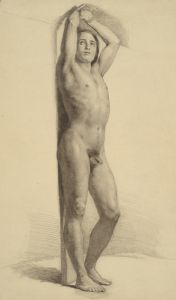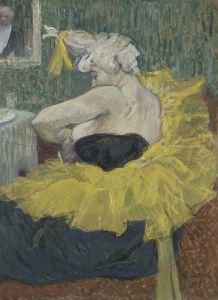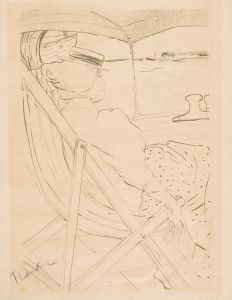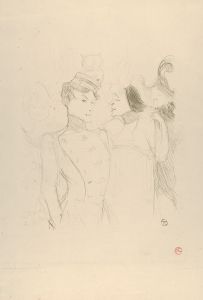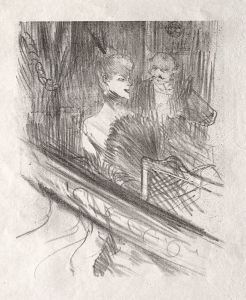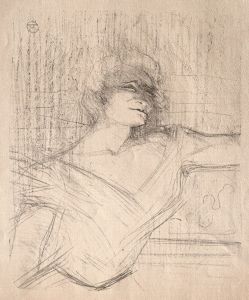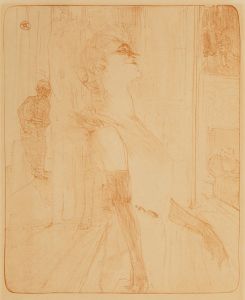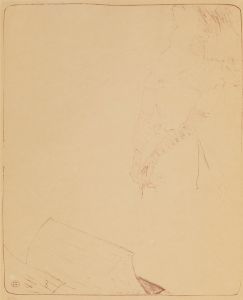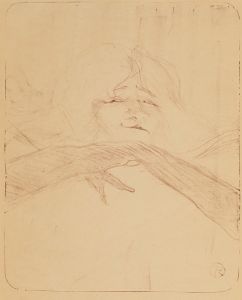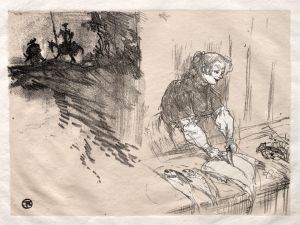
Yvette Guilbert pl 1
A hand-painted replica of Henri de Toulouse-Lautrec’s masterpiece Yvette Guilbert pl 1, meticulously crafted by professional artists to capture the true essence of the original. Each piece is created with museum-quality canvas and rare mineral pigments, carefully painted by experienced artists with delicate brushstrokes and rich, layered colors to perfectly recreate the texture of the original artwork. Unlike machine-printed reproductions, this hand-painted version brings the painting to life, infused with the artist’s emotions and skill in every stroke. Whether for personal collection or home decoration, it instantly elevates the artistic atmosphere of any space.
"Yvette Guilbert" is a painting created by the renowned French artist Henri de Toulouse-Lautrec. This artwork is one of the many pieces that Toulouse-Lautrec produced during his prolific career, which spanned the late 19th century. Henri de Toulouse-Lautrec is celebrated for his depictions of Parisian nightlife, particularly the bohemian lifestyle of Montmartre, a district in Paris known for its vibrant artistic community.
Yvette Guilbert, the subject of this painting, was a famous French cabaret singer and actress. Born on January 20, 1865, in Paris, Guilbert became a prominent figure in the entertainment scene during the Belle Époque period. She was known for her distinctive style, which included long gloves and a repertoire of songs that often had a humorous or risqué edge. Guilbert's performances were characterized by her expressive gestures and unique vocal delivery, making her a beloved figure in Parisian cabarets.
Toulouse-Lautrec first encountered Yvette Guilbert in the early 1890s, and he was immediately captivated by her talent and presence. He created several portraits and posters of her, capturing her essence and contributing to her fame. The painting "Yvette Guilbert" is one of these works, showcasing Toulouse-Lautrec's ability to convey the personality and charisma of his subjects.
In this particular painting, Toulouse-Lautrec employs his signature style, characterized by bold lines and a keen sense of movement. The artwork captures Guilbert in a moment of performance, her elongated figure and expressive face highlighting her theatricality. Toulouse-Lautrec's use of color and composition draws the viewer's attention to Guilbert's dynamic presence, emphasizing her role as a performer.
Toulouse-Lautrec's relationship with Guilbert was not just that of an artist and his muse; they shared a mutual respect and admiration for each other's work. Guilbert appreciated Toulouse-Lautrec's ability to capture the essence of the performers he depicted, while Toulouse-Lautrec was inspired by Guilbert's talent and stage presence. This mutual admiration is evident in the way Toulouse-Lautrec portrays Guilbert, with a sense of intimacy and understanding.
Henri de Toulouse-Lautrec's work, including his portraits of Yvette Guilbert, played a significant role in documenting and celebrating the cultural life of Paris during the Belle Époque. His art provides a window into the world of cabarets, theaters, and the vibrant personalities that inhabited them. Toulouse-Lautrec's depictions of Guilbert and other performers have become iconic representations of this era, preserving the spirit of a time when Paris was at the forefront of artistic and cultural innovation.
Today, "Yvette Guilbert" by Henri de Toulouse-Lautrec is recognized as an important piece of art history, reflecting the intersection of visual art and performance during a dynamic period in Parisian culture. The painting is a testament to Toulouse-Lautrec's skill as an artist and his ability to capture the essence of his subjects, making it a valuable and enduring work in the canon of French art.





